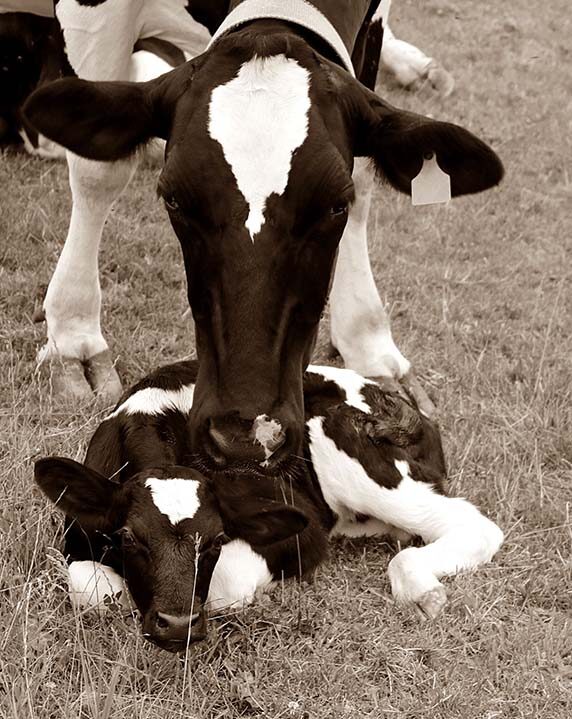Tolerance to heat stress improves oocyte and embryo production in dairy cows

Heat stress is a major concern in dairy cattle production systems. Heat-stressed cows experience changes in hormonal balance, maternal transcription, and oocytes and early embryo development, leading to reduced reproductive performance. This article will discuss heat stress impacts on oocytes, the embryo, the foetus, milk yield, and milk quality to emphasise the importance of tolerance to heat stress.
Heat stress affects the hypothalamic-pituitary axis, interferes with the gonadotropin-releasing hormone and reduces levels of circulating luteinizing hormone (LH), and follicle-stimulating hormone (FSH). These alterations lead to decreased growth of the ovarian follicles and disrupted corpora lutea development. In addition, exposure to high temperatures increases the saturated fatty acids content of the oocyte cell membrane, which negatively impacts their further developmental competencies.
On the other hand, heat stress leads to the production of heat shock proteins as a favourable incident for oocytes during the process of cryopreservation. Ovarian follicles are very sensitive to environmental stimuli during the pre-antral period due to intensive RNA synthesis in oocytes. Therefore, exposure to high temperatures during follicular growth or oocyte maturation leads to early oocyte aging and impaired function.
Exposure to heat stress at the germinal vesicle stage results in weakening of nuclear and cytoplasmic maturation, and abnormal spindle formation, interruption of oocyte mitochondria function, altered maternal transcription, DNA fragmentation, mRNA degradation and reduced possibility of synthesising new proteins. Moreover, disruption of oocyte development by heat stress may lead to disorders of oocyte competence.
Impact on dairy cow granulosa cells
Heat stress leads to several cellular and physiological changes in the functioning granulosa cells. Granulosa cells are a type of cell in cow ovaries that produce hormones, including estrogen and progesterone, which support the development of oocytes and provide an adequate microenvironment for maturation. Heat stress reduces the production of progesterone and estradiol by granulosa cells.
Decreased estradiol production leads to weak expression of oestrous signs and decreased progesterone level is accompanied with impaired fertility and disrupts embryonic development and the establishment of pregnancy. In addition, heat stress leads to oxidative stress and apoptosis through the intracellular accumulation of reactive oxygen species.
Embryo development
During the first stages of bovine embryo cleavage, the genome is not yet active and the embryo is sensitive to high temperatures. Bovine embryos become resistant to heat shock at about the same time as the activation of the embryonic genome occurs. High temperature exposure deleteriously impacts in vivo and in vitro embryo production and development. However, negative effects depend on the duration and severity of heat stress.

Studies has shown that reduced embryo development occurs when embryos are exposed to a temperature of 41°C on day 0 and day 2 of development; however, after embryos become more heat tolerant, no detectable effects are observed when exposure occurred on days 4 and 6. Exposure to a temperature of 40°C for 8 hours enhances the expression of genes encoding heat shock proteins to protect against the negative effects of high temperature.
In addition, heat stress results in various cytoplasmic changes in the early embryo including cytoskeleton reorganisation, chromatin precipitation, organelles migration to the centre of blastomeres, and mitochondrial edema, which detrimentally affect proper embryo development.
Furthermore, maternal mitochondrial dysfunction caused by heat stress is inherited by the embryo and affects further development of the foetus and placenta. Moreover, high temperature has negative impacts on the epigenome of embryos (a record of the chemical changes to the DNA and histone proteins of an organism) that can be passed down to the offspring.
Pregnancy and foetal development
During dry period, heat stress affects in utero foetal development, shortens gestation length by approximately 1.1%, and has intergenerational effects that might be effective for up to 2 generations.
Research has shown that female foetuses exposed to thermal stress in utero will have lower milk yield, immunological disorders, and a shorter lifespan later in life. Furthermore, thermal stress leads to placental insufficiency, which disturbs the transport of oxygen and nutrients between the mother and the foetus and affects foetal growth.
In addition, heat stress reduces the weight of the placenta and increases the surface area of the cotyledons in late gestation, thus negatively affecting the exchange of nutrients and waste between foetus and cow.
Another impact of heat stress is the reduced amount of total DNA and RNA in the placenta. Furthermore, heat stress affects the foetal endocrine system, alters hormones in newborn calves, enhances insulin levels in calves’ blood during their first weeks post-natal and decreases the colostrum consumption of calves.
Mammary gland function and milk quality
Heat stress during the dry period affects cell proliferation in mammary gland and reduces milk yield and milk quality. Furthermore, maternal heat stress is passed down to the foetus and affects the development of newborn calves’ mammary gland. High air temperatures increase udder temperature and reduce the expression of genes involved in the construction or biosynthesis of epithelial cells and protein repair and disrupt cellular processes including apoptosis and autophagy.
Exposure to high temperature during the lactation period leads to glucose uptake by tissues and downregulates glucose and fatty acids metabolism. In addition, heat stress decreases the percentage of fat, proteins, and medium-chain and short-chain fatty acids and increases the proportion of long-chain fatty acids and somatic cells in milk.
Conclusion
Heat stress has a negative impact on dairy cow reproductive performance due to the disruption of oogenesis and embryogenesis and hormonal changes. In addition, heat stress leads to financial losses every year; therefore, tolerance to heat stress maintains proper fertility of dairy cows exposed to high temperature and humidity and improves the profitability of the dairy industry.
Although there is a lack of knowledge regarding the cellular and molecular mechanisms in oocytes, granulosa cells, and embryos caused by high temperatures. Therefore, further research is needed to develop strategies to counter the effects of overheating on embryos and oocytes, thus improving the quality of dairy cattle reproduction.
*Reference available upon request.
Join 13,000+ subscribers
Subscribe to our newsletter to stay updated about all the need-to-know content in the dairy sector, two times a week.










